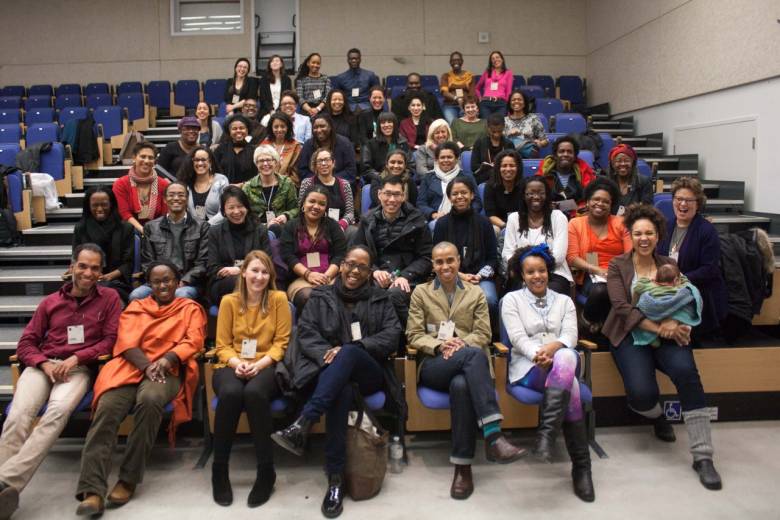OCAD U faculty member launches re-imagined website on scholarship into Black artistic practice and representation
In a climate of impassioned global protests against pervasive anti-Black racism, Canada is being forced to more fully confront its own legacy of systemic inequality that has marginalized generations of Black citizens. As we consider how to right this historic wrong, Dr. Andrea Fatona says one good place to start is by increasing the visibility of Black artists in Canada.
An independent art curator and scholar, and an associate professor in OCAD University’s Faculty of Art, Dr. Fatona has been working for years to rectify the absence of Black visual art from “official records”— art critics’ reviews, art archives and other avenues of representation. She has documented much of her efforts online and is launching a re-imagined version of the site: The state of blackness: from production to presentation. A French version of the website is coming soon.
“This resource is about making it clear that we are here and the work is being done,” says Dr. Fatona, director of OCAD U’s Criticism and Curatorial Practice graduate program. “As we try to decolonize spaces, it’s more important than ever to acknowledge artwork by diverse artists.”
The website began as a way for her to document the proceedings of the OCAD U conference she spearheaded in 2014, The State of Blackness: From Production to Presentation. Funded by the Social Sciences and Humanities Research Council, the two-day event brought together artists, curators and academics to examine the histories, current status and future state of Black diasporic artistic practice and representation in Canada. For Dr. Fatona, the event aligned with her broader research interest in inequity in the arts, and how artworks by Black Canadians can reflect more diverse Canadian identities.
Since the conference, Dr. Fatona has been expanding the website’s content to include spin-off projects from the conference: a forum at the 2015 Venice Biennale to build transnational networks for Black Canadian visual artists; a 2017 collaboration with artist-run non-profit video art distributor Vtape to compile data on Black Canadian video production; and a 2020 research residency based at OCAD U that focused on the challenges and possibilities experienced by emerging Black artists from Italy.
Also on the site are resources such as essential reading about these issues and Canadian Black-owned bookstores, plus links to accompanying YouTube and Facebook channels. The site’s ongoing development has been financially supported by OCAD U, the Ontario Arts Council and the Canada Council for the Arts.
For OCAD U President and Vice-Chancellor Sara Diamond, supporting Dr. Fatona’s work to raise the profile of Black visual artists in Canada directly connects to the University’s commitment to championing scholarship that paints a fuller picture of the history of art and artmakers in Canada. Dr. Fatona will use advanced data analytics and AI tools to undertake this work, contributing to the field of digital humanities.
“Supporting Dr. Fatona’s work to raise the profile of Black visual artists in Canada directly connects to OCAD University’s dedication to championing scholarship that paints a fuller picture of the history of art and art makers in Canada,” says Dr. Sara Diamond, President and Vice-Chancellor, OCAD University. “The relaunch of The State of Blackness is a timely addition to the chorus of voices that articulates her and OCAD U’s commitment to anti-Black racism, decolonization and leadership in this space.”
As individuals and nations seek new ways to address the persistent social injustices experienced by Black people, Dr. Fatona saw the value in relaunching the website with new content.
At the same time, she is pursuing a more comprehensive undertaking: a searchable, web-based, annotated database that includes visual art, analytic essays and research papers, produced by and about, Black Canadian artists, critics and curators from 1989 ̶ when the Canadian Multiculturalism Act was incepted ̶ to the present.
“When we look around the art world, we see very few racialized artists, particularly Black artists, so I’m trying to understand how multiculturalism worked in terms of providing space, and debunk the myth that Black people are perennial newcomers to Canada,” Dr. Fatona says.
